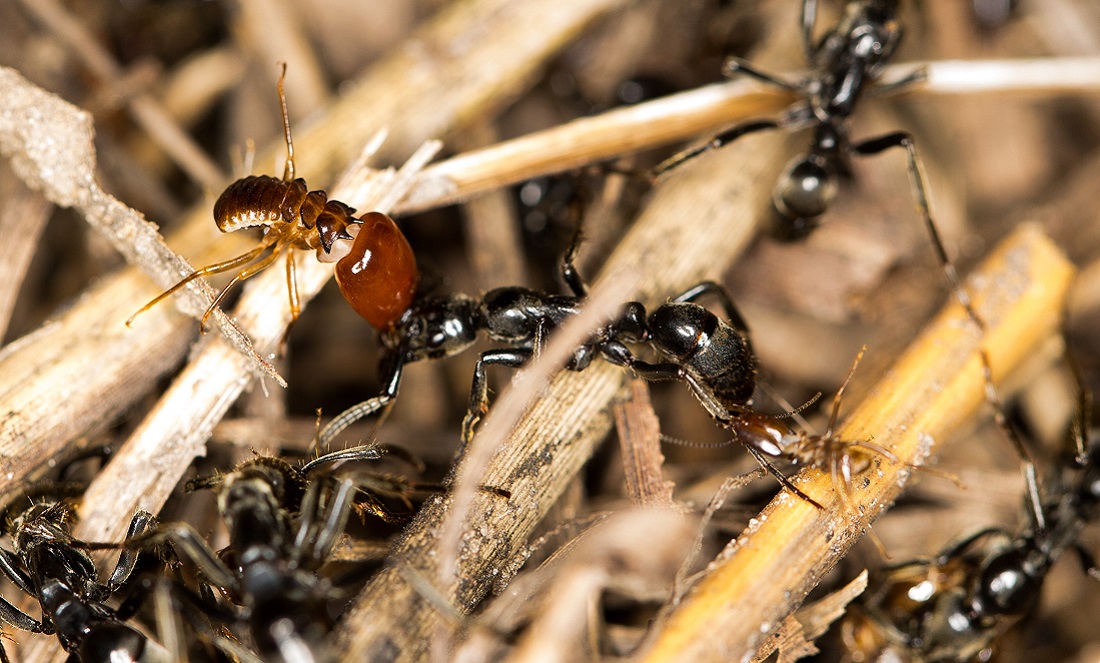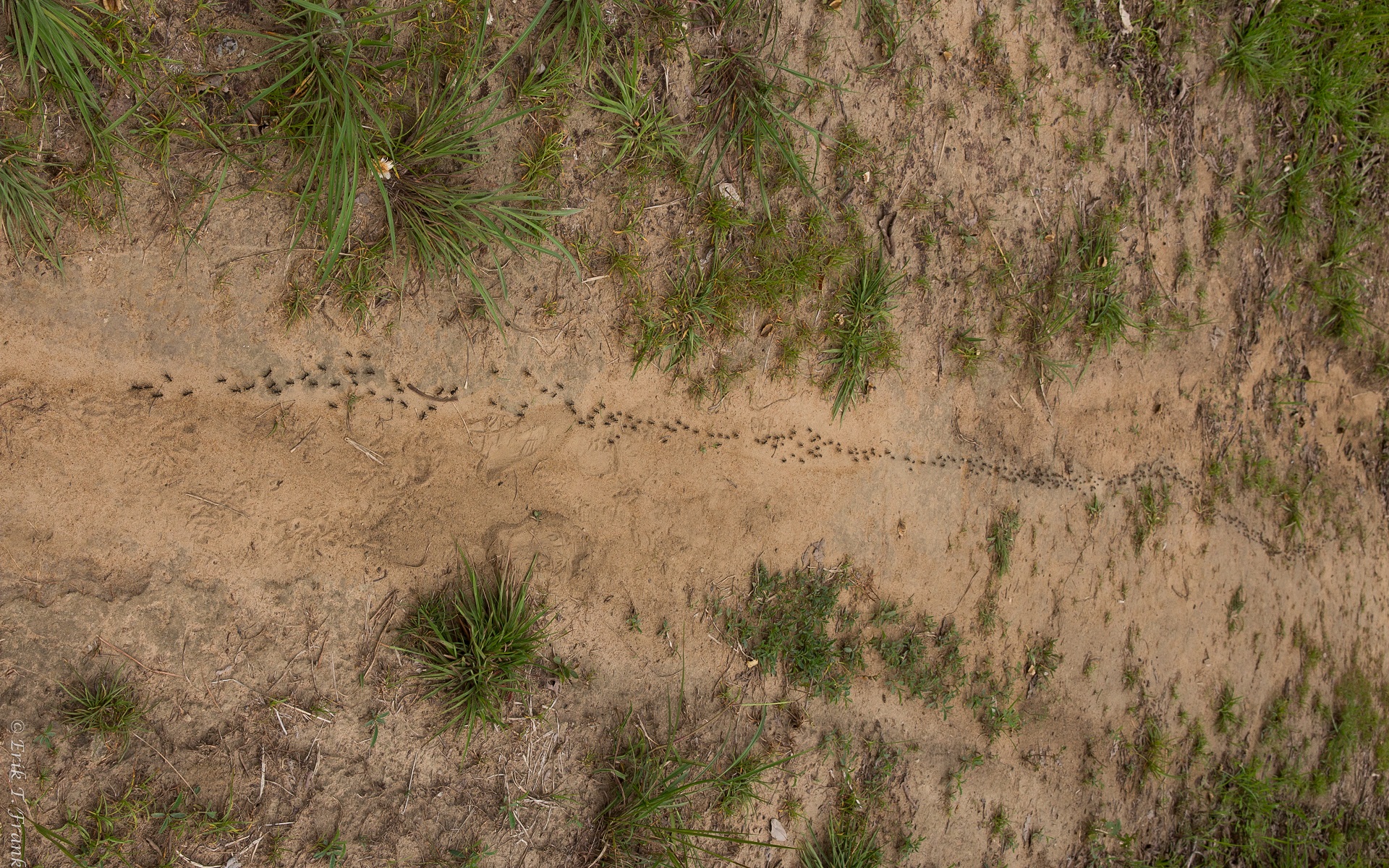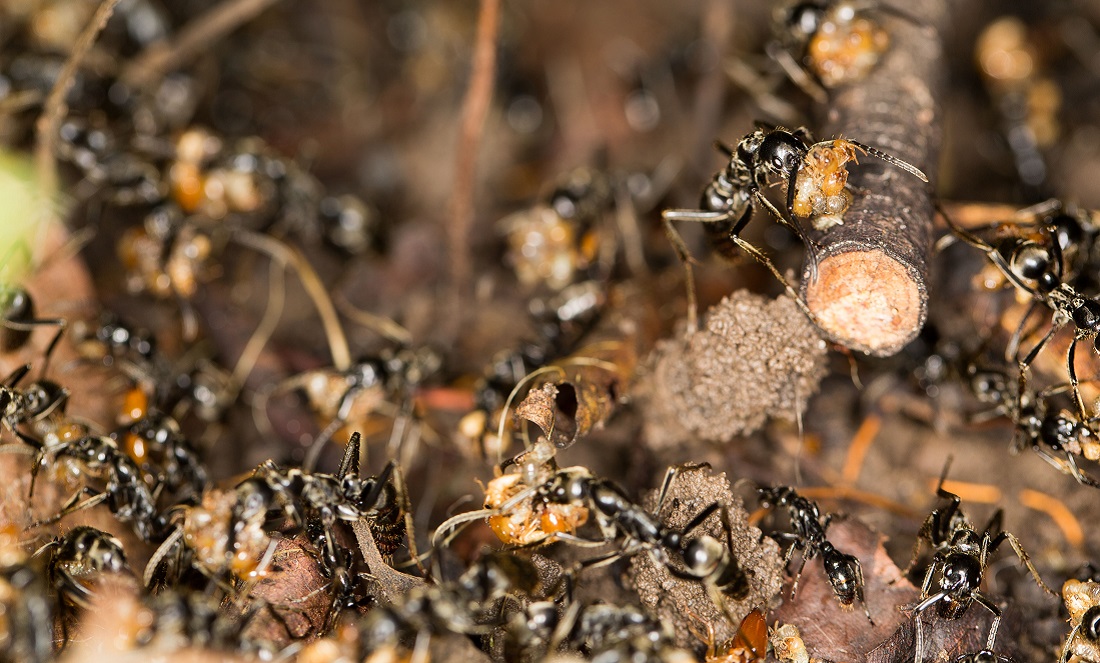At Comoé National Park in Côte d’Ivoire, Matabele ants are always on the hunt for their favourite meal: termites. It is an endless war.
“Scouts in Matabele ants constantly search for termite feeding sites. After finding one, they run back to the nest and recruit nest mates to go out and raid the termites,” says Erik Frank, a postdoctoral researcher from the University of Lausanne in Switzerland.
Erik has been studying these curious critters and how they go about termite hunting. In a new study, Erik found that sometimes being fast is the best weapon of war against termites.
Termite-raiding time
After finding a termite nest, ants must act quickly.
“Time is of the essence here, since the more time passes between finding the termites and attacking them, the more likely it is that the termites will run away or get eaten/attacked by another predator,” says Erik.

So, after finding a termite nest, the scout Matabele ants have figured out the best way to get back to their nest to inform the rest of the colony of their spoils. Most ant species simply take the shortest way between a food source and their nest, because it’s usually the fastest—if the terrain is even.
But Matabele ants live in a complex terrain, where the shortest distance between two points is not always the fastest path. So they do things a little differently.
“Matabele ants take it one step further and don’t take the shortest way back to the nest but the fastest. By using deviations on open terrain, like a human-made path/road on which they walk twice as fast when compared to the dense grassy savannah, they are able on average to reduce travel time by 35%,” says Erik.

Smarty ants
So far, this is the only animal species found to exhibit this sort of behaviour at an individual level. Other ants and animal species are known to create paths between a food source and their nest, like leaf-cutter ants. But they usually create permanent routes to their food.
This is not the case with Matabele ants, they don’t rely on a fixed path.
“For Matabele ants, their food sources (termites) can only be exploited once at a single spot,” Erik explains.
This is because the ants attack the termites at their feeding spot. But once the termites are attacked, they quickly go away to find another spot to eat. So the ants have to be fast if they want to eat some tasty termites. This also means that the ants are always changing trails, finding the next termite spot.
“The ants and termites are basically playing a game of hide and seek. The termites try to stay unnoticed for as long as possible, exploiting a food source, before the ants find them and kill them.”
Once they are discovered, the termites flee.
“This constant hide and seek game led the ants to develop their strategy of finding the fastest path”, Erik adds.
Another amazing talent of the Matabele ants is their ability to find a new path thanks to the decision of a single ant.
This is different to social ant species, like the little fire ant, which finds the fastest route as a group. What’s novel about the Matabele ants’ way is that just one ant seems to make the decision of taking the fastest path.
“What’s truly remarkable is that, here, it is a single ant that makes the decisions on what path to take and not a collective decision of many ants,” says Erik.
“This is the first time that such a complex route integration system has been observed by individual ants,” he adds.
So in the war of these two armies, it is one fast-thinking ant that makes all the difference.









